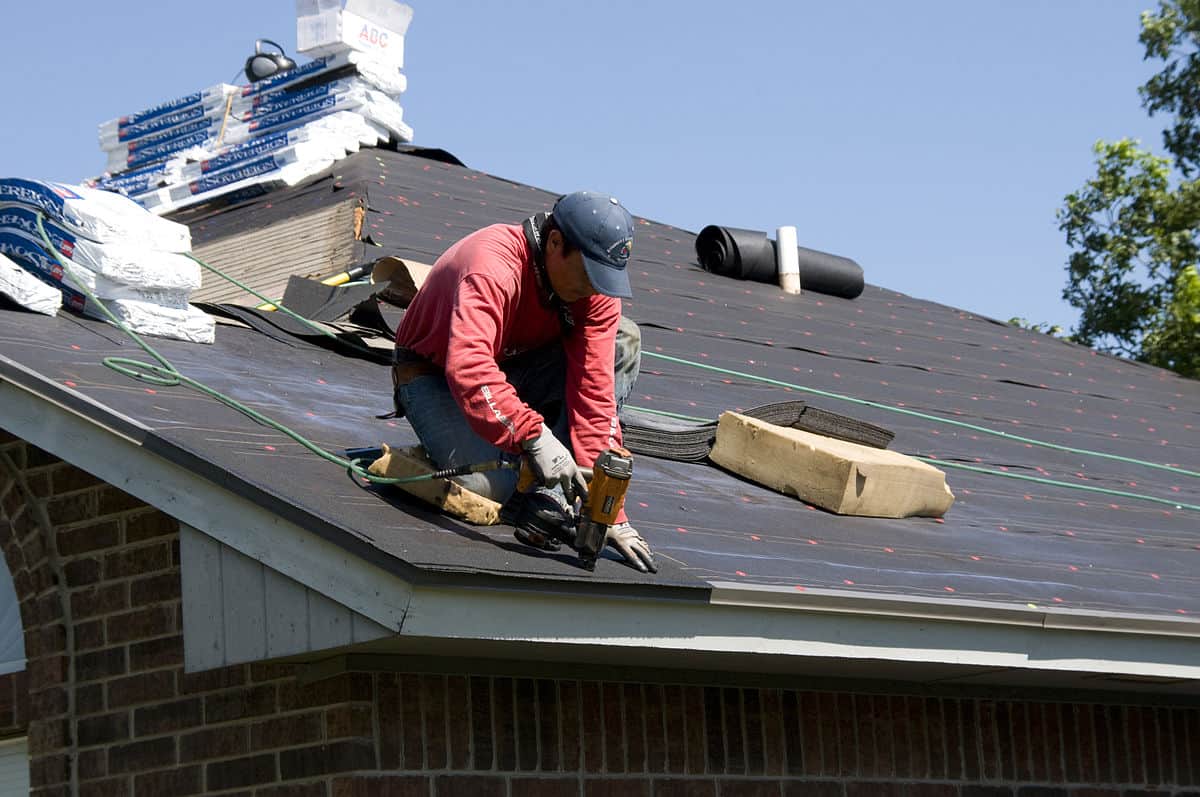Client Testimonies on the very best Gainesville FL Roofing Companies Available
Client Testimonies on the very best Gainesville FL Roofing Companies Available
Blog Article
Finest Practices for Ensuring Correct Roofing Ventilation
Guaranteeing correct roofing ventilation is critical for the durability and efficiency of a roof. A balanced consumption and exhaust air vent proportion, commonly 1:300, plays a critical duty, with consumption vents ideally placed at the reduced edge of the roof covering for great air entrance and exhaust vents at the optimal for warm air departure. Regular inspections to determine blockages and keep clear air flow are paramount. Maintaining insulation away from vents is critical to prevent airflow constraint. Understanding these fundamental aspects sets the phase for even more in-depth understandings right into setup and upkeep methods that can considerably enhance your roof system's efficiency.
Understand Air Flow Fundamentals
Appropriately comprehending ventilation essentials is essential for making sure the long life and efficiency of roof covering systems. Efficient air flow reduces dampness buildup and temperature extremes in the attic, both of which can lead to considerable structural damage with time. A well-ventilated roofing helps in protecting against typical issues such as mold and mildew development, timber rot, and ice dams, which can endanger the integrity of the roof covering products and the underlying structures.
The primary goal of air flow is to assist in the motion of air, permitting a regular exchange between the interior and outdoor environments. This equilibrium is accomplished through a combination of intake and exhaust vents that collaborate to keep optimal air flow. Consumption vents, commonly located along the soffits or eaves, enable fresh air to go into the attic room area, while exhaust vents, often positioned at or near the roof ridge, allow warm, damp air to get away.
Trick aspects influencing the effectiveness of roof covering ventilation include proper positioning, appropriate sizing, and ensuring that both consumption and exhaust vents are unhampered. Regular examination and maintenance are important to recognize possible blockages, damage, or ineffectiveness in the air flow system, consequently securing the roofing system's performance and longevity.
Types of Roofing System Vents
Roof covering vents play a critical role in preserving reliable attic room air flow and, by extension, the general health and wellness of the roofing system. Different types of roof covering vents are available, each with unique benefits tailored to certain roofing needs.

Soffit vents are set up under the eaves and operate in tandem with roof vents to ensure a well balanced consumption and exhaust system. By enabling cooler air to enter from below, soffit vents help with the expulsion of hot air via top vents. Gable vents, located on the outside walls of the attic, offer one more effective option, particularly in homes with gable roofs.
Evaluate Your Existing Ventilation

Following, consider the age and condition of your roof products and ventilation components. Older systems may not follow present building regulations or may have worn away with time, lowering their efficiency. Conduct a detailed assessment to identify any kind of indicators of wear and tear, such as corrosion, damages, or gaps that might endanger the system's performance.
Additionally, gauge the attic temperature level and moisture levels. High temperature levels and moisture can show insufficient air flow - roofing companies. Utilize a hygrometer and thermometer to acquire accurate analyses, comparing them with outside problems. Persistent inconsistencies recommend possible concerns that need dealing with.
Installation Best Practices
Effective installment of roof ventilation systems is extremely important for making sure ideal performance and click reference durability. Proper installation begins with recognizing the details ventilation demands of the roof and the structure it covers. This entails determining the proper proportion of intake to exhaust vents, typically sticking to the 1:300 policy, which stipulates one square foot of air flow for every 300 square feet of attic room flooring room.

The positioning of vents is just as essential. Consumption vents ought to be mounted at the roof's lower side, frequently in the soffits, to permit amazing air to go into. Exhaust vents, on the various other hand, ought to be mounted near or at the roofing's peak to help with the departure of warm, damp air. This creates a natural airflow that aids keep temperature level and wetness balance within the attic area.
Seal all air vent links diligently to stop air leaks and prospective water seepage. Use top notch materials and adhere to maker guidelines to make sure durability and effectiveness. In addition, integrating ridge vents with baffles can considerably improve air check this site out movement performance by protecting against wind-driven rainfall and snow from getting in the attic room.
Eventually, specific setup of roof ventilation systems mitigates possible concerns such as mold and mildew growth, ice dams, and structural damage, guaranteeing the roofing's honesty and the building's general health and wellness.
Routine Maintenance Tips
Uniformity in maintenance techniques is fundamental to ensuring the long-term performance of roof air flow systems. During these evaluations, ensure that vents are cost-free of debris, nests, and various other blockages that might hamper air flow.
Make use of a soft brush or a vacuum cleaner to remove dirt and debris from intake and exhaust vents. Be cautious not to damage the vent displays or louvers during the process.
Appropriate insulation is equally crucial. Make sure that attic insulation does not obstruct the vents, as this can significantly limit airflow. If any kind of insulation has actually changed or worked out, rearrange or change it to preserve an effective obstacle.
Last but not least, change any kind of damaged or missing out on parts without delay. Damaged vents, split shingles, or deteriorated blinking can all add to insufficient ventilation and needs to be dealt with immediately. Routine upkeep makes certain that the roof air flow system functions efficiently, thus expanding the life expectancy of the roof itself.
Final Thought
Guaranteeing appropriate roof ventilation is extremely important for keeping the effectiveness and toughness of a roof. Adherence to the 1:300 intake and exhaust vent proportion, coupled with the critical positioning of vents, is crucial. Routine semiannual examinations, particles cleansing, and making certain insulation does not block air flow are vital methods. Executing these ideal practices will cultivate a well-ventilated roof system, thus reducing potential issues connected to moisture accumulation and extreme warmth, inevitably extending the roofing's life expectancy.
A well balanced intake and exhaust air vent proportion, generally 1:300, plays an company website essential duty, with intake vents ideally put at the lower edge of the roofing system for trendy air entrance and exhaust vents at the peak for cozy air departure. Intake vents, generally situated along the soffits or eaves, enable fresh air to get in the attic room area, while exhaust vents, typically situated at or near the roofing system ridge, make it possible for warm, humid air to escape.
Soffit vents are set up under the eaves and job in tandem with roofing vents to make sure a balanced intake and exhaust system. By enabling cooler air to get in from below, soffit vents facilitate the expulsion of warm air with upper vents. Adherence to the 1:300 intake and exhaust air vent proportion, combined with the calculated placement of vents, is important.
Report this page